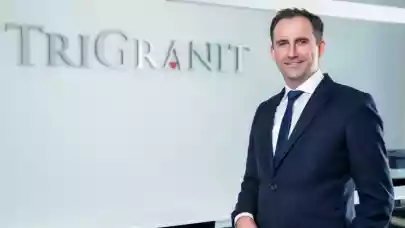
We can see more interest coming from government entities to rent office space in modern office buildings in CEE. We also see large companies centralising their office spaces in a single building. Property Forum asked Tomasz Lisiecki, CEO of TriGranit about his assessment of these trends.
There is a saying that the substantial increase in energy bills will force fans of remote work to return to offices and this will save both developers and investors. Do you agree or do you see no reason to worry about a potential further absence of workers?
Quocirca’s Future of Work 2025 survey found that previously around 36% of respondents were working remotely and 56% would choose the office only as an occasional meeting point. But with the rise of energy costs (anyone who exceeds the average consumption of electricity or gas will have to pay double or seven times the average price) this autumn, many remote workers are considering a return to the heated office.
On the other hand, employers who had been trying to encourage the workforce back to their desks are now in a better position (especially if they already use several renewable energy sources in their offices). However, this winter will show how the increased energy prices translate into landlord’s bottom lines and it may happen that working at home is cheaper for everyone, especially if the alternative is an older, less efficient, office building.
And even if more employees will return to the offices, it won’t increase the need for newly built office buildings. So I wouldn’t state that both investors and developers will be saved by the current energy crisis, but it will certainly make life easier for developers who consciously develop ESG-compliant offices. In the current market, energy is only a part of the challenge. The significantly increased cost of funding and still high construction prices are making new developments prohibitive.

Tomasz Lisiecki
CEO
TriGranit
The energy crisis puts huge pressure on developers which may result in making compromises throughout office developments. What are the latest answers of TriGranit to this enormous challenge?
The design of Millennium Gardens started long before the energy crisis hit Europe, but indeed, we designed it with ESG aspects in mind and the utmost energy-saving practices. As you might know, due to an EU regulation, buildings having received occupancy permits after the end of 2020 are subject to much stricter technical and energy-saving regulations and as an effect, buildings will tend to reach zero emissions. Our future buildings will be designed along similar principles, therefore we will aim to minimize the effects of increased energy costs.
What changes are foreseen regarding the demand for larger spaces to reach headquarters-type deals? How do these changes affect lease contracts?
Currently, we are in negotiations with several HQ-type tenants and some 4,000 sqm+ tenants, therefore it is hard to say if there is a severe decrease in activity. Although it is indeed true, that some tenants in the IT and Service sectors are consolidating their office usage. Our ultimate advantage is our BREEAM-certified building, with state-of-the-art technical solutions, our independence from the gas line, or our efficiently designed building resulting in a very low common area ratio (therefore a smaller service charge for the tenants).
TriGranit has a long record of managing HQ projects in CEE. What sectors are most active in concentrating administrative stuff in a single building? Do you see any such demand from governmental organizations across the region? How about Hungary and Poland in this respect?
Government bodies, especially in the CEE region, historically had been occupying outdated office spaces scattered across multiple locations. Indeed, currently, we can see more interest coming from government administration to rent office space in modern office buildings. In this case, the government administration gains a benefit of an attractive location for the public and a comfortable working environment.
It is also worth mentioning that by signing a lease agreement for modern office space, instead of staying in an outdated state-owned office building, a significant capital expenditure saving is made that would be required for the maintenance of the building.
Besides the government administration, the FMCG sector also remained active in the market. There are always, however, other considerations for public entities, which also come into play when moving to a modern, A-class office building that may be more political than practical.
If necessary, companies may decide to slash their space in an HQ-type building too, resulting in cash-flow problems for landlords. How can you create a development plan to be flexible enough and face unexpected moves from a single/or big tenant?
Cashflow and slashing sizes are not correlating. Millennium Gardens being a new building remains very attractive to tenants moving from older buildings. If their goal is to reduce their sizes and wish to have fewer service charges, those are all opportunities for a new building. Especially now, when there is a shortage of new stock, as very few developments will commence in this shaky geopolitical situation.
Sustainability and ESG are a must in any kind of office development. Tell us about the latest steps to comply with these important factors at TriGranit.
During the construction, innovative solutions were applied to reduce emissions and energy consumption during operation, as well as environmentally friendly materials used for the building. Among others, we use LED light sources, water-saving taps and a minimum of common areas. The protruding cladding of the façade casts a shadow in the office space preventing direct sunlight and therefore lowering cooling costs. There is no gas heating in the building, heating is provided by heat pumps with district heating backup, we use motion detectors, so there is no unnecessary lighting, thus energy consumption is much lower than in a conventional office building. We use state-of-the-art machinery and technical solutions, that also results in lower energy consumption. The building was also planned with BREEAM ‘Excellent’ and Access4You ‘Gold’ certifications.



